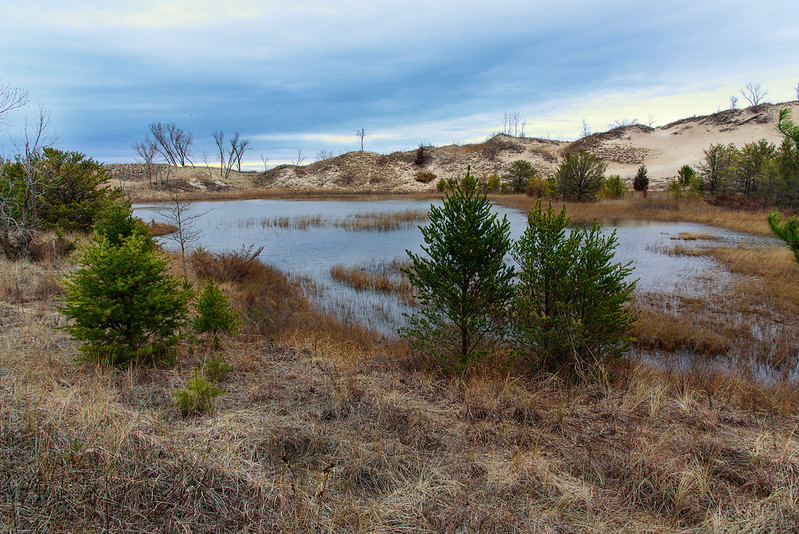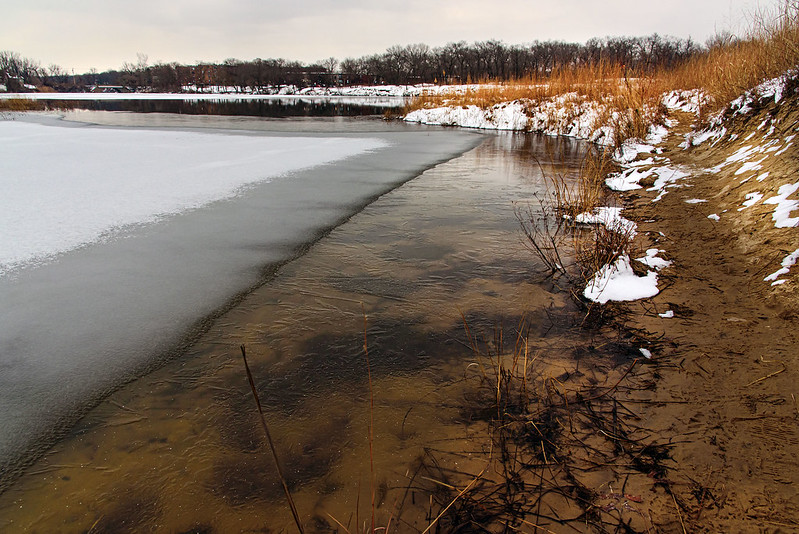
A favorite spot of mine to visit along the Lake Michigan shore is the division between two beaches at the Indiana Dunes National Lakeshore. Between Central Beach and Mt. Baldy is a small stream known as Kintzle Ditch. This stream flows between two rather tall dunes and into Lake Michigan and like almost every other point on these beaches, it changes daily.
The wind and waves move the sands on the beach, often altering the direction the stream empties. Sometimes it flows straight into the lake, and other times it takes a long, meandering path left or right - often hundreds of feet to either side of the path between the dunes.

Over the past few years, the dunes here have been eroded by the high waters of Lake Michigan; they appear much different than they were just five years ago. The beach is submerged most of the time, and the waves hit the foot of the dunes quite often now, preventing the possibility of hiking the beach at times of high water.
Of course, this action also erodes the foot of the dunes, undercutting them, and causing large portions of the dune to collapse into the lake- trees and all. This is all the process of wind and waves, yet it's sometimes sad to see the forested dunes fall into the water over time.































